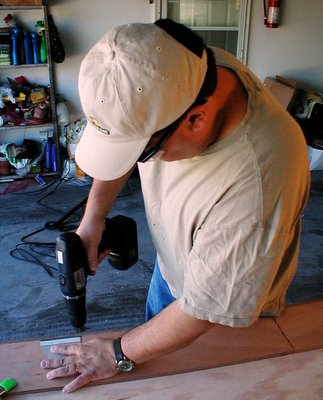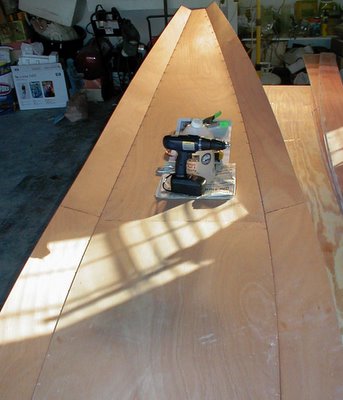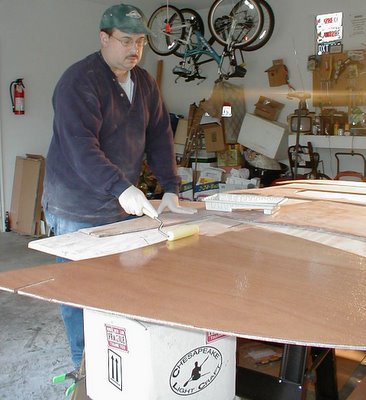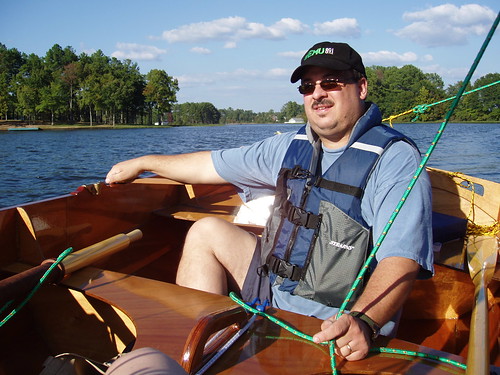Hull shell

The fourth and final pair of strakes was stitched to the shell of the hull tonight. It wasn't as big a problem as I had feared to attach the misaligned strake #4. You'll remember this was the first scarf joint I did, and it somehow shifted under the clamps during the epoxy process, leaving about a 1/4" gap. Despite this flaw, there will be sufficient overlap at the rabbet for a good joint for the whole length of the boat, I think. As it says somewhere in the instruction manual, "Aerospace tolerances need not be attained." This is terribly reassuring to a first-time builder like myself. The gap does the boat no favors aesthetically, but I think structurally it will be fine. The size of the boat is now apparent, and I am happy with how roomy is will be. Total hours 25.50.

















